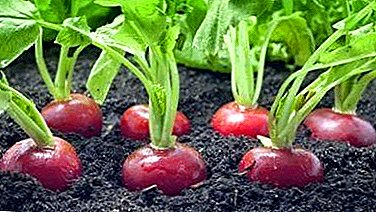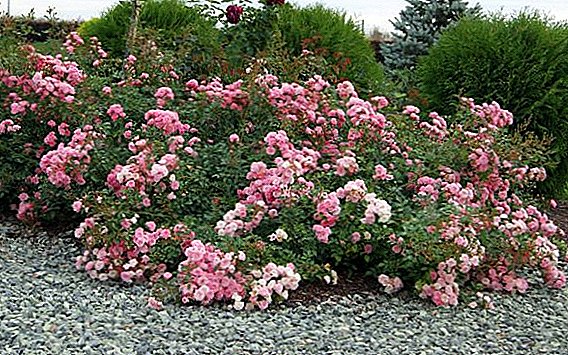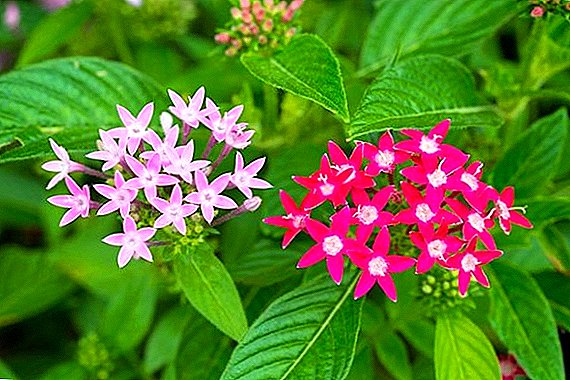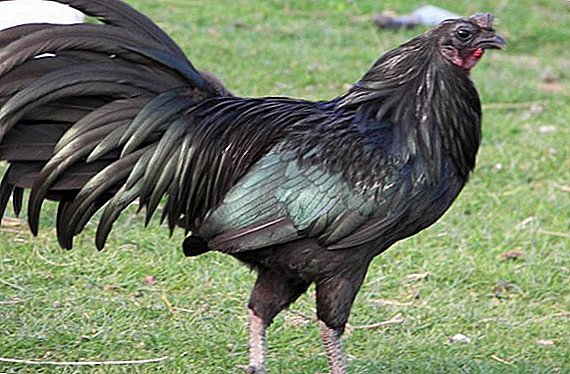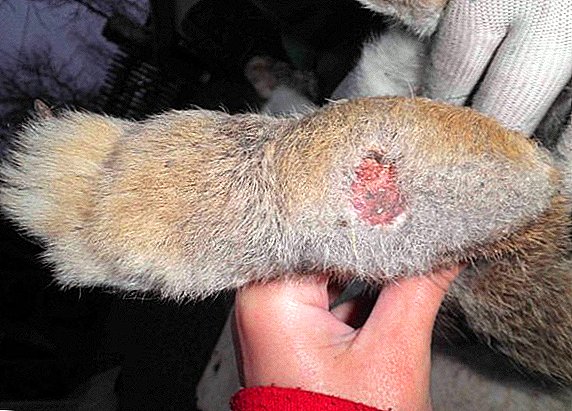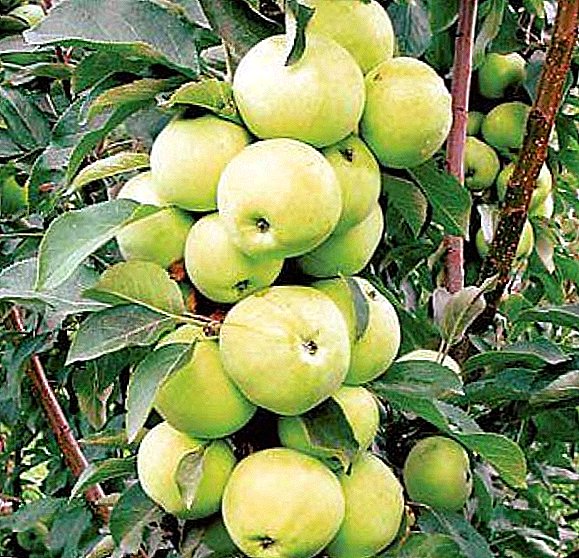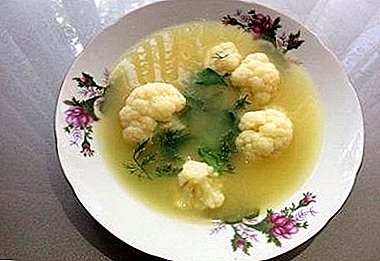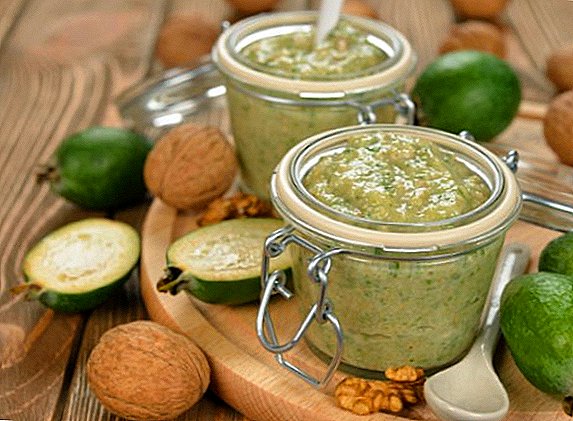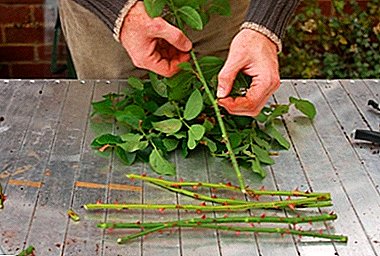
The rose is one of the most beloved garden flowers, which you always want to propagate at home.
At home you can grow a rose from a stalk cut from a bush in the autumn. But for this you need to know a few rules.
How to prepare the planting material and the soil for it, how to plant and care and other issues will be discussed in the article.
What is grafting?
A rose stalk is a specially cut part of a plant used for vegetative propagation. Cutting - vegetative propagation of a plant with cuttings.
Important! Cutting is the most effective method of breeding roses, as only in this case the purity of the variety is preserved, it is in this way that healthy and strong young bushes can be grown.
The reproduction of roses by cuttings in the fall at home is a proven way to obtain high-quality planting material.
When can it be produced at home?
It is better to conduct cuttings in late autumn, in late October or early November. At this time, the roses bloom and gradually shed their petals. Pruning is carried out after the first night frosts and before the onset of frost. During this period, begin to cut rose bushes for the winter. These cut stems are suitable material for grafting.
Distinctive features of reproduction of culture in the autumn period
 Cuttings of roses can be both in spring and autumn. But gardeners prefer to do this in the autumn. This is due to the fact that you can see which rose you want to propagate from a flowering shrub and it is difficult to confuse with a flowering shrub. And the main reason for autumnal reproduction is that it is combined with autumn pruning.
Cuttings of roses can be both in spring and autumn. But gardeners prefer to do this in the autumn. This is due to the fact that you can see which rose you want to propagate from a flowering shrub and it is difficult to confuse with a flowering shrub. And the main reason for autumnal reproduction is that it is combined with autumn pruning.
During the winter, cuttings should take root and grow strong, and in the spring they will give young shoots.
How to reproduce a flower in a flat by cutting?
Inventory and materials
- Sharp garden pruner, pre-disinfect with manganese or alcohol solution.
- Pots or plastic containers. The pot must have drainage or drain holes so that the watered soil does not trap moisture, since the cutting can rot.
- Cover material: glass jars, cut plastic bottles, plastic film.
Preparation of soil and pots
Rose stalks must be rooted in loose fertile soil. Roses can be rooted in plastic containers or buckets, in wooden boxes and in flower pots.
In the prepared containers, drainage is placed on the bottom, then the prepared soil is poured and another 3 cm of sand is poured on top for better air circulation. Sand does not form a crust on the surface of the earth.
The soil before planting the cuttings must be shed with a solution of Fitosporin or potassium permanganate for disinfection. Also use the drug Glyocladin, which prevents the formation of root rot. It is enough to bury only 1 tablet of this preparation into the soil by 2 cm.
Cutting planting material

- To make a cutting, you must first remove the lower leaves.
- On the handle should be left 3 buds.
- Under the first lower kidney, retreat 2 cm downwards and make an oblique cut (oblique cut is done to obtain a larger area of rooting, and also so as not to confuse the top and bottom).
- From above, the cutting over the third kidney recedes 1 cm and makes a direct cut. The cut is necessarily made with a sharp knife or pruner, previously disinfected in potassium permanganate or alcohol solution.
You can not break off the cuttings or leave a ragged edge. It is not recommended to cut with scissors, as they only remember the stem fibers. The upper leaves must be left, it will be seen from them whether the cutting has taken root or not. Cut stalks should be carefully inspected so that there are no damages or pests on it. The stalks should not be thinner than 4mm and not thicker than 6mm. Cutting length should be 17-20cm.
Processing the top and bottom of the slice
Important! Before planting, the lower part of the cutting must be treated in stimulants for the formation and growth of roots.
To do this, Kornevin fits, in which the lower section is dipped and immediately planted in the ground. You can hold the bottom of the cuttings in a solution of Heteroauxin (5 mg per 100 ml of water) or Zircon (5 drops per 1 l of water).
Good results are obtained by soaking in a solution of honey, For this, 1 teaspoon of honey is diluted in a glass of water. Aloe juice is a natural stimulant. All stimulants can withstand the day. The top of the cut can be dipped in wax to prevent rotting. Spikes need to be removed.
How to plant?
After the stalk has been processed, it can be planted in prepared containers. Capacity should be sufficiently deep and spacious.
- At the bottom of the tank you need to put expanded clay or pebbles with a layer of 5 cm
- Pour the prepared soil, adding perlite or vermiculite to it for looseness and preserving moisture. You can mix the cooked earth with a rose mixture purchased in the garden center. It is useful to add to the mixture sphagnum moss. It has a positive effect on the rooting process and prevents the cuttings from rotting.
- Using a spray bottle, slightly moisten the soil.
- Make vertical holes with a stick at a distance of 9-10cm from each other.
- Dip the lower cut of the cutting in water and Kornevine and insert it into the wells so that the cutting does not reach the drainage layer. The second and third buds should be above ground level in a pot or planting container. The stalk should be planted with a slight inclination; it is believed that rooting is better. Kornevin will contribute to the active growth of the roots. Well seal the soil around the planted cuttings and pour a little solution of manganese.
How to root?
 For reliable rooting planted cuttings of roses you need to create high humidity - 80-90%. To do this, each stalk is covered with a cut plastic bottle or make a common hothouse. The upper leaves remaining on the handle should not touch the shelter. Thus, a microclimate is created for early rooting.
For reliable rooting planted cuttings of roses you need to create high humidity - 80-90%. To do this, each stalk is covered with a cut plastic bottle or make a common hothouse. The upper leaves remaining on the handle should not touch the shelter. Thus, a microclimate is created for early rooting.
Plastic bottles that cover the cuttings should be transparent. If you take a large container for germination, then it is better to build a greenhouse above it, that is, cover the box with polyethylene.
The first 20 days to maintain the humidity of the plant and the ground should be sprayed every 3 days. Airing is recommended in the morning and evening. Do not allow the formation of strong condensate, as the cutting can rot. Rooting cuttings should be in a warm and bright place.
Ensure that direct sunlight does not fall on the containers with planting material, as the branches may burn.
After another 3 weeks, the microclimate created in the greenhouse should be changed. Containers with cuttings are transferred to the balcony or lowered to the basement for winter storage. The air temperature should be + 2- + 3 degrees, humidity 60-70%. If the temperature on the balcony is lower, the greenhouse must be covered with a blanket.
Some gardeners use potatoes for rooting cuttings of roses. Tubers contain many useful substances and are a source of moisture and food for cuttings. Need to use healthy tubers. They remove the eyes and make a hole. The stalk is also dipped in the root and inserted into the potato. After that, all together put in the ground. Grown the same way as without potatoes.
We offer to watch a video about rooting cuttings of roses in potatoes:
Care after rooting
As soon as a small new leaf appears on the rooted cutting, it means that the process of formation of roots has begun. This can happen in 6-8 weeks. After this, it is recommended to gradually air the greenhouse, increasing the ventilation time with each day. It is necessary to ensure that the soil is always wet.
In the spring, when new leaves will appear on the plant and the earth warms up, the rooted cuttings of roses are planted in the ground at a permanent place. This should be done not earlier than the end of April, better in May, when there will be no night frost. Subsequently, for several years, the roots for the winter will have to be warmed.
Problems with this method of breeding and their solution
 The main problem that can occur during cutting is that roses do not root. There can be several reasons:
The main problem that can occur during cutting is that roses do not root. There can be several reasons:
- Incorrectly composed soil. Soil should not be heavy, airtight. There must be enough nutrients. If the soil is poor, it is necessary to add humus or mineral fertilizers.
- Rose variety, which simply can not be grafted. For example, imported roses from bouquets. Before transportation, they are treated with special chemicals that negatively affect the condition of the shoot.
Important! Not all roses are well grafted and rooted at home. Virtually defy rooting varieties of roses with thick shoots of red and very large flowers. These roses in the rooting process just rot.
Hybrid tea and park roses are poorly grafted, and climbing, semi-fleeting, miniature, and groundcover are best rooted. You should know that cuttings of domestic varieties take root much better than foreign hybrids and exclusive varieties.
- Sapling was not insulated: the stalk rooted in the fall is very weak, his own strength is not enough to be able to winter. It must be warmed!
Propagation of roses by cuttings is very popular with gardeners due to the simplicity of this method. Autumn is the most suitable time of year for cutting roses. The cuttings planted for rooting in the autumn are more enduring, are taken quickly, and in the summer the grower will delight the grower with the first beautiful and long-awaited flowers.


